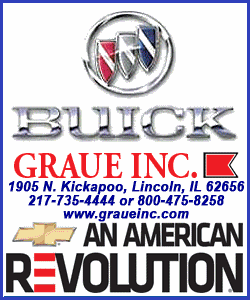 The cost of snow removal The cost of snow removal
Mayor Keith Snyder said he had asked Tracy Jackson, the city's
superintendent of streets and alleys, to prepare information
regarding the cost of snow removal in the city.
During the meeting, aldermen were given written information
outlining the process and cost of typical snow-removal scenarios.
Jackson said that in the city, the general guideline for removal
is that when snow reaches a depth of 3 inches, the plows are
deployed. He also noted that the rule is somewhat generic, as he
also takes into consideration the temperature, moisture content of
the snow, the wind velocity and the immediate future weather
forecasts.
During a daytime snow event that is relatively light, each street
is plowed once, one application of salt is put down, and the total
cost to the city is $7,776.74. This total comes from $2,085.74 in
labor costs, $2,591 in equipment costs and $3,100 for the salt.

If this same scenario occurs during the nighttime hours, the
total cost increases to $8,527.36, due primarily to the
implementation of some overtime hours for city workers.
In heavier snowstorms, if the streets have to be plowed and
salted twice, the total cost goes up to $16,036.45 for daytime work
and $16,794.57 if done overnight.
When bad weather involves snow and ice, there may be a call for a
single trip with the snowplow but two separate applications of salt.
In those cases daytime costs come to a total of $11,634.09, and
overnight work costs a total of $12,392.21.
Finally, when snow piles up around the downtown square to a point
that it has to be physically removed from the area, the cost of
loading it up and hauling it away totals $8,467.09 per event.
After going through the numbers, Alderwoman Marty Neitzel asked
Jackson if he was staying within his budget for the year on snow
removal and he answered that he was, but he had hopes that February
would be a "soft month" for the city.
No part, nowhere, nohow
Several weeks ago, the traffic lights at the intersection of
Pulaski and Kickapoo went on the blink, literally.
A controller inside the light system has gone bad, preventing the
lights from doing their normal rotation of red-yellow-green and
leaving them to constantly flash red only, effectively turning the
intersection into a four-way stop.
Jackson and city engineer Mark Mathon have been searching for
repair parts for the lights but have come up empty. Jackson shared
that he had received an e-mail from a last-hope source who said
simply -- no parts, no service; the lights are now obsolete.
With city coffers running low, Jackson shared information
about making the intersection a permanent four-way using
decorative stop signs. He said a variety of models are available,
including those that could have street signs attached directly to
them. The cost of such signs ranges from $400 to $700 each, based on
design choice.
During discussions Snyder said he had heard from some
folks who use the intersection that they actually like the four-way stop. He
said that right now the blinking red lights do not appear to be
causing any issues for drivers.
Alderwoman Marty Neitzel said the city of Havana in Mason County
uses decorative signs in their downtown area, and she would see no
problem with doing that at Pulaski, but she does believe the
intersections along Broadway will always need to have traffic
lights.
To purchase new equipment and make the intersection a working
light again will cost the city approximately $10,000. Alderman Buzz
Busby mentioned that the funds could be taken out of the general
obligation bond, as it would be a capital expense. He also mentioned
that perhaps all the lights should be updated using those funds.
Snyder brought up the fact that the state's capital plan may in
the future pay out a $40,000 grant to the city. The funds were
originally tagged as money for an exhaust system for the firehouse,
but funding for that has been obtained through a different grant. He
said perhaps the $40,000 from the capital plan could be put into
doing a complete upgrade on the downtown square.
In the end, the council decided to hold off on making any kind of
decision regarding this issue. The blinking red light is currently
causing no problems for drivers, and as long as the lights continue
to blink, the city has time to consider options.
[to top of second column]
 |
 Police committee will take on two-hour parking issue
At the Jan. 11 workshop meeting, Mathon provided copies of a
downtown map outlining the locations in the city that are designated
as two-hour parking.
There have been requests from various organizations to remove the
two-hour limit from some locations in the downtown area, and the
council is considering whether or not those requests should be
granted.
Currently there appears to be a general consensus that the
two-hour parking should be contained to the downtown square plus one
block in each direction away from the square.
Tuesday evening this topic came up for discussion, and aldermen
spoke about areas where they thought changes could be made. Several
said they saw no need for two-hour parking on the west side of the
railroad tracks. Some also voiced that there were areas along
Chicago Street that perhaps didn't need to be limited.
As the discussions ensued, Alderman Tom O'Donohue said he felt
like there needed to be a guideline established so that when
constituents asked how the decision was made, the city would be able
to give a reason.
Alderman David Wilmert also suggested that before two-hour
parking is done away with in certain areas, the businesses in those
areas should have an opportunity to voice their opinion.
Wilmert also asked if the council members could have blank maps
so they could mark them according to where they believe parking
times should and
should not be limited.

Andy Anderson, who is one of the volunteer parking enforcement
officers for the downtown area, was in attendance and was asked to
offer some input based on his experiences.
He began by noting that when he first started chalking tires,
there were several people around the courthouse square who went out every
two hours and moved their cars, but he is now seeing a lot less of
that.
He gave credit to police Chief Ken Greenslate, saying that the
chief had paid a visit to the courthouse and had engaged some of
these people in conversations that appeared to have made a
difference.
Anderson said that if the city extends or adds any more two-hour
parking to the map, they are going to need more volunteers.
Currently there are only two: Anderson and Glenn Shelton.
He also added that the city needs more public parking. He said he
is seeing more and more parking in the lot behind Guzzardo's, and he
noted a day recently when there were no more than one or two spaces
available in that lot.
And finally he said he has talked to a couple of business
owners who say the enforcement is running off business. He
noted that Vintage Fare is suffering and that the town's cybercafé
is also suffering. He noted that in that particular business, the
idea is for patrons to stay for long periods of time, but with
two-hour parking limits they are no longer doing so.

Snyder said he was concerned about that issue. He said he
personally has heard a lot of appreciation from downtown merchants,
and he wants to know more about those who are not happy.
In the end, the council decided this was a big issue that
needed to be assigned to a committee, and with no parking committee
available, Greenslate volunteered to work with Alderman Jeff
Hoinacki and the police committee to outline a new plan for downtown
parking.
He asked that the aldermen go forward with marking the blank maps
as Wilmert had suggested, saying the committee could then use those
suggestions in coming up with a viable plan.
[By NILA SMITH] |